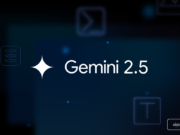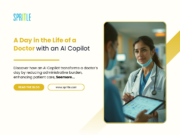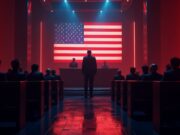In this article, aicorr.com analyses the concept of knowledge distillation in large language models (LLMs) in artificial intelligence.
Table of Contents:
Large Language Models (LLMs)
The rise of large language models (LLMs) like GPT-4, BERT, and T5 has revolutionised natural language processing (NLP). As such, enabling advancements in various domains ranging from chatbots and translation systems to search engines and content generation. These models, with billions of parameters, have set new benchmarks for accuracy and performance. However, their deployment comes with significant challenges related to computational cost, energy consumption, and latency. To address these challenges, researchers and practitioners have turned to a technique known as Knowledge Distillation (KD).
Knowledge distillation is a process where a large, complex model (referred to as the “teacher”) transfers its knowledge to a smaller, more efficient model (referred to as the “student”). The objective is to create a model that retains much of the performance of the teacher but operates with reduced computational requirements, making it more suitable for deployment in resource-constrained environments. In this article, we explore the fundamentals of knowledge distillation in large language models.
The Challenges of Large Language Models
Large language models are known for their ability to understand and generate human-like text, thanks to their massive parameter count and sophisticated architectures. However, these advantages come with considerable trade-offs:
Computational Requirements
Training and deploying LLMs require significant computational resources, often involving clusters of GPUs or TPUs. This makes the cost of running these models prohibitive for many organisations.
Energy Consumption
The energy required to train and operate LLMs is substantial, contributing to a growing carbon footprint. For instance, training a single large model can emit as much carbon as five cars over their lifetimes.
Latency
The inference time for LLMs can be slow, especially when deployed in real-time applications. This latency is a critical issue for interactive applications like chatbots, where response time directly impacts user experience.
Deployment Complexity
Deploying large models on edge devices, mobile phones, or other environments with limited computational power is challenging, if not impossible.
The Solution
These challenges have spurred interest in techniques that can reduce the size and complexity of LLMs without sacrificing their performance. Knowledge distillation has emerged as a leading solution to this problem. So let’s dive into the question of what is knowledge distillation in large language models.
What is Knowledge Distillation?
Knowledge distillation is a model compression technique that enables a smaller model to learn from a larger model. The process involves three key components (see below).
Teacher Model
The large, pre-trained model that serves as the source of knowledge. This model is typically highly accurate but resource-intensive.
Student Model
The smaller, more efficient model that is trained to mimic the behavior of the teacher model. The goal is for the student to achieve similar performance levels with significantly fewer parameters.
Distillation Process
The training process where the student learns from the teacher. Instead of learning directly from labeled data, the student model learns from the outputs of the teacher model. This process often involves “soft labels” and a custom loss function that encourages the student to replicate the teacher’s behavior.

How Knowledge Distillation Works
In traditional supervised learning, models are trained using a dataset with hard labels (discrete labels indicating the correct class for each example). However, in knowledge distillation, the student model learns from the “soft labels” produced by the teacher. These soft labels are probability distributions over all possible classes, providing more nuanced information than hard labels.
For example, consider a classification task where the teacher model predicts that an image has a 90% probability of being a cat, 8% probability of being a dog, and 2% probability of being a rabbit. Instead of learning that the image is definitively a cat (as it would with hard labels), the student model learns from the entire probability distribution. This allows the student to capture the teacher’s learned relationships between different classes.
The training process for the student model involves a loss function that typically combines two components.
- Task Loss: This is the standard loss function (e.g., cross-entropy) based on the ground truth labels, ensuring that the student learns the primary task correctly.
- Distillation Loss: This measures the difference between the teacher’s soft labels and the student’s predictions. The objective is to minimise this difference, encouraging the student to replicate the teacher’s behavior.
An important aspect of this process is the temperature parameter, which controls the smoothness of the probability distribution produced by the teacher. Higher temperatures produce softer probabilities, making the model’s predictions less confident and easier for the student to learn from.
Knowledge Distillation in Large Language Models
In the context of large language models, knowledge distillation plays a critical role in overcoming the limitations of deploying LLMs in practical applications. The distillation process enables the creation of smaller, faster, and more efficient models that can be deployed on a wider range of devices and environments without sacrificing too much performance.
1. Teacher-Student Framework in LLMs
In LLMs, the teacher-student framework is often employed to distill knowledge from a large, pre-trained language model into a smaller model. For example, a BERT-base model with 110 million parameters can be distilled from a BERT-large model with 340 million parameters. The student model is trained to replicate the outputs of the teacher model, which may involve predicting the next word in a sequence, classifying text, or generating text.
The student model learns not only the final output of the teacher but also intermediate representations, such as attention patterns and hidden states. This multi-layer distillation helps the student model capture more of the teacher’s capabilities, even if it is significantly smaller.
2. Logits Matching
In LLMs, the distillation process often focuses on logits matching. Logits are the raw predictions generated by the model before the softmax function is applied. By matching the logits of the student model to those of the teacher model, the student can learn the subtle patterns and relationships that the teacher has discovered in the data. This approach is particularly effective in tasks where fine-grained distinctions between classes are important.
3. Intermediate Layer Matching
To further enhance the distillation process, some approaches involve aligning the intermediate layers of the teacher and student models. For instance, a student model may be trained to match the attention maps or hidden states of the teacher’s layers. This layer-wise distillation allows the student to learn from the hierarchical structure of knowledge embedded in the teacher model, leading to better generalissation and performance.
Recent Advances in Knowledge Distillation for LLMs
As knowledge distillation has gained prominence in the field of LLMs, researchers have developed several advanced techniques to improve its effectiveness:
1. Progressive Distillation
Progressive distillation is an approach where the difficulty of the task for the student model is gradually increased during training. Initially, the student may be trained on easy examples or with a low-temperature parameter, making the learning process simpler. As training progresses, the difficulty is increased by using harder examples or lowering the temperature, enabling the student to learn more complex patterns. This progressive approach mirrors curriculum learning, where models are trained from easy to hard tasks, leading to better retention of knowledge.
2. Layer-wise Distillation
In layer-wise distillation, the student model is trained to mimic not just the final outputs but also the intermediate representations of the teacher model. By aligning the student’s and teacher’s internal states, layer by layer, the student model can more effectively capture the nuanced information encoded in the teacher’s architecture. This approach is particularly useful in LLMs where different layers capture different aspects of language, such as syntax, semantics, and context.
3. Data-free Distillation
Data-free distillation addresses scenarios where access to the original training data is restricted due to privacy concerns or data availability. In this method, the student model is trained using synthetic data generated by the teacher model itself. The teacher generates data points along with their soft labels, which the student then uses for training. Although challenging, data-free distillation is becoming increasingly important in industries where data privacy is paramount.
Applications of Knowledge Distillation in LLMs
Knowledge distillation has enabled the deployment of LLMs across a wide range of applications, making AI more accessible and scalable:
- Edge AI: Deploying LLMs on edge devices like smartphones, IoT devices, and wearables is a significant challenge due to their limited computational resources. Distilled models make it possible to run NLP applications like voice assistants, translation services, and sentiment analysis directly on these devices, without relying on cloud-based inference.
- Efficient Chatbots: Chatbots require quick response times and low latency to deliver a seamless user experience. By deploying distilled models, companies can create chatbots that offer near real-time interactions while reducing server costs and improving scalability.
- Search Engines: Search engines rely on NLP models to understand queries and rank results. Distilled models help reduce the computational overhead of these tasks, enabling faster and more efficient search capabilities that can scale to millions of queries per second.
- Personalised Content: Content recommendation systems, which rely on user behavior and preferences, can leverage distilled LLMs to generate personalised suggestions in real-time, all while minimising latency and resource consumption.
- AI Assistants: Virtual assistants like Siri, Alexa, and Google Assistant use LLMs to understand and respond to user queries. Distilled models allow these systems to run on smaller devices while maintaining high-quality responses.
Benefits and Challenges of Knowledge Distillation
Benefits
- Model Compression: Knowledge distillation can reduce model size by up to 90% while retaining much of the original performance. This is critical for deploying models in resource-constrained environments.
- Efficiency: Distilled models offer faster inference times, making them suitable for real-time applications where latency is a concern.
- Deployment Flexibility: Smaller models are easier to deploy across a range of platforms, including edge devices, mobile phones, and embedded systems.
Challenges
- Performance Gap: Despite advances, there is often a performance gap between the teacher and student models. This gap can be particularly pronounced in complex tasks requiring deep understanding and reasoning.
- Training Complexity: The distillation process adds another layer of complexity to model training. Hyperparameters such as temperature, loss weighting, and layer matching need careful tuning to achieve optimal results.
- Data Dependency: The success of knowledge distillation is highly dependent on the availability and quality of data. Inadequate or biased data can limit the effectiveness of the distillation process.
In a Nutshell
Knowledge distillation has become an essential technique in the development and deployment of large language models. By enabling the creation of smaller, more efficient models that retain much of the performance of their larger counterparts, knowledge distillation addresses many of the challenges associated with LLMs, including high computational costs, energy consumption, and latency. As research continues to advance, knowledge distillation will likely play an increasingly important role in making AI more scalable, accessible, and environmentally sustainable.
The ability to deploy powerful language models on a wide range of devices and platforms without compromising performance is transformative. It opens up new possibilities for real-time applications, from smart assistants and chatbots to personalise content and edge AI. As AI continues to evolve, knowledge distillation will remain a key driver of innovation, enabling more efficient and scalable solutions that can benefit society at large.



















![Diablo 4 Mod Apk Newest Model [Unlimited Excitement]](https://digibytetoday.com/wp-content/uploads/2025/06/1750344127_1-final-180x135.jpg)
















